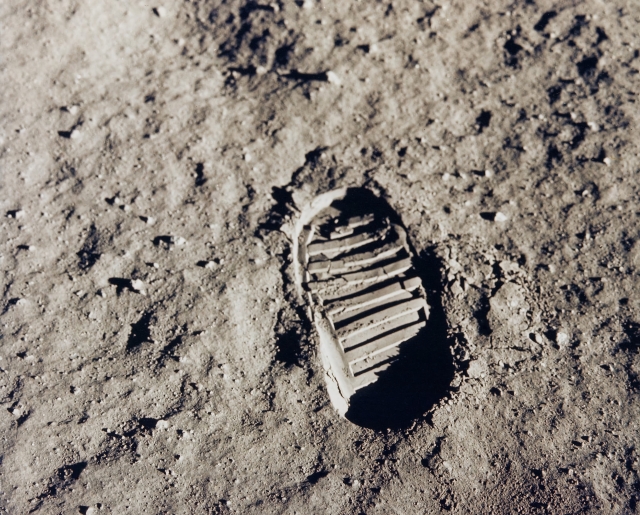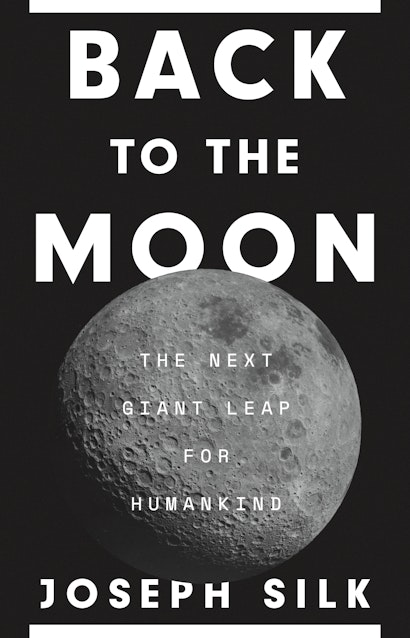A half-century after NASA’s Apollo project succeeded in placing the first men on the Moon, the Moon is back on the space agenda. The last mission was back in 1972, but now, for the first time in decades, there is great interest in returning. And astronauts with a diverse range of goals will take the next steps.
Leading the way is NASA’s Artemis program, the sequel to the Apollo project (in Greek tradition, Artemis is Apollo’s twin sister). A new generation of NASA rockets will transport humans to the Moon, and China is preparing a similar venture on a similar timescale. Intensive preparations are currently underway on both sides of the Pacific Ocean. Humans will be back on the Moon, most likely by 2025—after a half century of human absence.
The mission will be incredibly expensive, with the exploration costing vastly more than the Apollo program, albeit comparable in relative terms. Then, NASA’s budget peaked at about 4 percent of the federal budget. Now its down to about a third of a percent—and only up to a third of this is destined for space exploration-related activities. We are gearing up for a renewed phase of lunar exploration. That will be costly, but only a few percent of the lunar program funding from our past would suffice for all the science we can imagine.
Commercial sponsors will take up much of the slack, driven by such dreams as developing tourism and extraction of rare earth elements. People are already queuing for the first commercial circumlunar flights. A major component of resource development on the Moon will be establishing supplies of rocket fuel—that means liquefying oxygen and hydrogen. Water and ice are abundant on the Moon, and the fuel reservoirs will be used for return flights to Earth and beyond. There will be scope for delivery of needed supplies, lunar transportation networks, and, ultimately, interplanetary exploration.
Currently the US is leading the way in crewed exploration of the Moon, and China is not far behind. Other nations are focusing on mapping the lunar terrain for prime mining sites in order to establish a basis for commercial development. These countries include Russia and India. Over past eons, meteorite bombardment allowed the Moon to accumulate large deposits of elements, like the rare earths. To mine these effectively, we need to map the lunar surface at high resolution and look for tell-tale traces of the elusive minerals. But we can do far more.
Building a megatelescope on the Moon would offer a new direction for human exploration. Gravity is low, and there are no winds, so construction is feasible and would bring revolutionary light-gathering power. Megatelescopes will be a relatively inexpensive component of the huge lunar infrastructure that we’ll need for our other lunar goals. With a thousandfold improvement or more on the James Webb telescope’s sensitivity, there will be the potential to unravel the deepest mysteries of the universe.
Here’s where the difference in size counts for most: vast numbers of exoplanets will be discovered, though chances of discovering biological tracers on any of them are extremely small. Finding more complex indicators of life will have even smaller odds. Nonetheless, if we can build giant telescopes with unprecedented light-gathering power on the Moon, that will greatly increase prospects for probing the origins of life.
Our apparent loneliness in the cosmos is one of the most profound issues in our perspective of the universe. In our vicinity, the solar system, life is seemingly so rare and fragile. Its existential future is a matter of intense debate, one which affects our estimates of the ubiquity of life in the cosmos.
The opportunities stemming from a return to the moon are vast. We’ll have the opportunity to address some of the most profound questions that we have about the universe. Are we alone? Where did we come from? We will be able to look into the dark ages, long before the first stars appeared. We will build giant radio telescope arrays on the far side of the Moon. The low frequency radio sky offers a unique way of probing the past that we can’t accomplish from Earth. Only radio searches can seek the highly redshifted low frequency radio waves that reveal the secrets of the primeval hydrogen clouds that were the building blocks of galaxies. Though we may not get a definitive answer to many of our questions, with megatelescopes on the Moon, we are likely to make real strides in seeking answers.
Full speed to the Moon. Artemis will build base camps with the primary mission of extracting hydrogen and oxygen from the lunar regolith. The craters at the south pole are in near-permanent darkness and have icy floors. However, they also have high rims with near-permanent solar illumination and will supply solar power. They are ideal sites for lunar telescopes.
There will, without a doubt, be intense commercial pressure to mine the Moon. Lunar resources of rare earths are a thousand times more abundant than terrestrial reserves. In fact, lunar development is the only long-term solution to living with our shrinking terrestrial resources. Rare earth elements like europium and neodymium are critical for modern technologies found in products such as electric cars, computer hard disks, flat screen monitors, wind turbines and cell phones. At anticipated extraction rates, terrestrial resources of some rare earths will be exhausted in thousands of years. And the price will rise astronomically as supplies run low.
The 1967 Outer Space Treaty was ratified by 104 parties and signed at the United Nations. We agreed to the demilitarization of the Moon and to limits on environmental pollution. We have guidance on military activities, resource extraction and pollution. While enforcement is another matter, the Moon is still a pristine environment, and I am optimistic that the international space powers will unite to preserve its special status.
Lunar mining may begin in a decade, along with lunar tourism. And science should not be forgotten. Astronomers will be in a lunar paradise, freed of terrestrial gravity and atmosphere. The Moon’s lack of atmosphere means that the entire electromagnetic spectrum is available, and stellar images won’t twinkle and be blurred. We’ll resolve more and more as we build larger telescopes. We expect to revolutionize the search for exoplanets and any signs of remote extraterrestrial life and address enduring questions, such as where we came from and whether or not we’re alone in the universe.
From Galileo’s first scope to Webb, there has been a telescope aperture increase by two orders of magnitude, which took us from the moons of Jupiter and the rings of Saturn to the most distant galaxies in the Universe. This advance took four centuries, and it revolutionized human perspectives. Telescopes on the Moon will allow a similarly giant leap forward in telescope size. We can do this in two decades. We have the technology. We’ll have the infrastructure. Who can possibly predict what marvels may await us? How can our space agencies possibly resist such a challenge?
Joseph Silk is Bloomberg Research Professor at Johns Hopkins University and a researcher at the Institute of Astrophysics in Paris and the Beecroft Institute for Particle Astrophysics and Cosmology at the University of Oxford. His many books include The Big Bang, The Infinite Cosmos: Questions from the Frontiers of Cosmology, and On the Shores of the Unknown: A Short History of the Universe. He lives in Paris.

